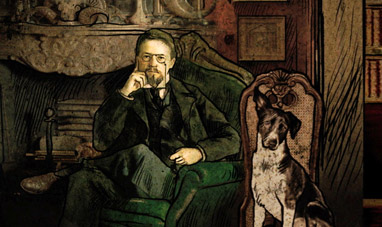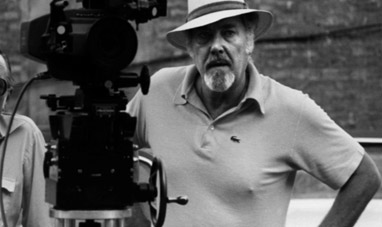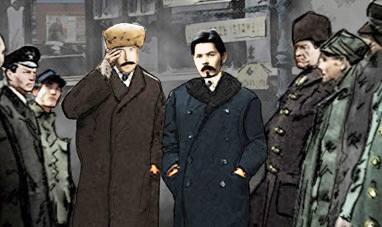Álvaro Siza Viera is an architect who has spent much of his career focusing on low-income housing. He has worked tirelessly to ensure that less prestigious structures have received appreciation as architecture in their own right.
Siza was born in Matosinhos, Portugal on June 25, 1933. He put aside his love of sculpture to please his father, enrolling in an architecture school in Porto. He became a student of Fernando Távora, with whom he would collaborate until 1958.
Siza began his career designing four one-family houses in Matosinhos and the Boa Nova Tea House. Between the end of the 1950s and the beginning of the 1960s, he worked on a public pool and sport center in Leça da Palmeira.
These buildings showed Siza’s emerging style – one based on minimalism, rationalism, and a focus on harmony between new structures and pre-existing ones.
In 1954, Álvaro Siza opened his own studio. Between 1966 and 1969 he taught at the Porto School of Fine Arts.
In 1974, a popular uprising ended the dictatorship of Marcelo Caetano, who, along with his predecessor, António Salazar, had isolated Portugal from the rest of the world for more than four decades. The country soon fell into a deep economic crisis.
Siza supported SAAL, a mobile support service for social housing that linked local governments and poor citizens together in an effort to improve living conditions in the slums.
He designed Porto’s collective housing project in Sin Bouça and Porto’s São Vítor neighborhood. In 1976, the Porto School of Architecture made him chair of its Construction Department. Álvaro Siza continued his social works-oriented architecture.
He designed the Évora suburb of Quinta de Malagueria in 1977, and completed Schlesisches Tor, a low-income housing complex in West Berlin’s Kreuzberg neighborhood, in 1983.
In the 1980s, Siza was awarded several major international prizes, culminating in the prestigious Pritzker Prize in 1992.
His most important commissions were the 1994 Galician Center of Contemporary Art in Santiago de Compostela, Spain, and the Portuguese Pavilion for the Expo ’98 in Lisbon.
In 2000, he designed the “Piazza Municipio” stop in the Naples subway and in 2005 the temporary pavilion of London’s Serpentine Gallery.
Álvaro Siza Vieira teaches and lectures internationally. Today, he is one of the most important theoreticians on the architecture of public spaces.
Siza was born in Matosinhos, Portugal on June 25, 1933. He put aside his love of sculpture to please his father, enrolling in an architecture school in Porto. He became a student of Fernando Távora, with whom he would collaborate until 1958.
Siza began his career designing four one-family houses in Matosinhos and the Boa Nova Tea House. Between the end of the 1950s and the beginning of the 1960s, he worked on a public pool and sport center in Leça da Palmeira.
These buildings showed Siza’s emerging style – one based on minimalism, rationalism, and a focus on harmony between new structures and pre-existing ones.
In 1954, Álvaro Siza opened his own studio. Between 1966 and 1969 he taught at the Porto School of Fine Arts.
In 1974, a popular uprising ended the dictatorship of Marcelo Caetano, who, along with his predecessor, António Salazar, had isolated Portugal from the rest of the world for more than four decades. The country soon fell into a deep economic crisis.
Siza supported SAAL, a mobile support service for social housing that linked local governments and poor citizens together in an effort to improve living conditions in the slums.
He designed Porto’s collective housing project in Sin Bouça and Porto’s São Vítor neighborhood. In 1976, the Porto School of Architecture made him chair of its Construction Department. Álvaro Siza continued his social works-oriented architecture.
He designed the Évora suburb of Quinta de Malagueria in 1977, and completed Schlesisches Tor, a low-income housing complex in West Berlin’s Kreuzberg neighborhood, in 1983.
In the 1980s, Siza was awarded several major international prizes, culminating in the prestigious Pritzker Prize in 1992.
His most important commissions were the 1994 Galician Center of Contemporary Art in Santiago de Compostela, Spain, and the Portuguese Pavilion for the Expo ’98 in Lisbon.
In 2000, he designed the “Piazza Municipio” stop in the Naples subway and in 2005 the temporary pavilion of London’s Serpentine Gallery.
Álvaro Siza Vieira teaches and lectures internationally. Today, he is one of the most important theoreticians on the architecture of public spaces.
RELATED


DANIEL LIBESKIND


FRANCIS SCOTT FITZGERALD


GRACE KELLY


STEVEN SPIELBERG


RAPHAEL


JOHANNES BRAHMS


EDGAR DEGAS


CLAUDE DEBUSSY


FELIX MENDELSSOHN


KRZYSZTOF KIELOWSKI


JOAN CRAWFORD


CLAUDE MONET


LYSIPPOS


CARA DELEVINGNE


GAETANO DONIZETTI


SERGIO LEONE


QUENTIN TARANTINO


JACQUES LOUIS DAVID


FRANZ LISZT


ROBERT ADAM


ANTON CHEKHOV


UMBERTO BOCCIONI


RENZO PIANO


ROBERT ALTMAN


JOHN CONSTABLE


PHIDIAS


TITIAN


MICHELANGELO PISTOLETTO


AUGUSTE RODIN


JOVANOTTI


MAXIM GORKY


SERGEI RACHMANINOFF


MONICA BELLUCCI


MERCE CUNNINGHAM


JOSEPH BEUYS


WIM WENDERS
